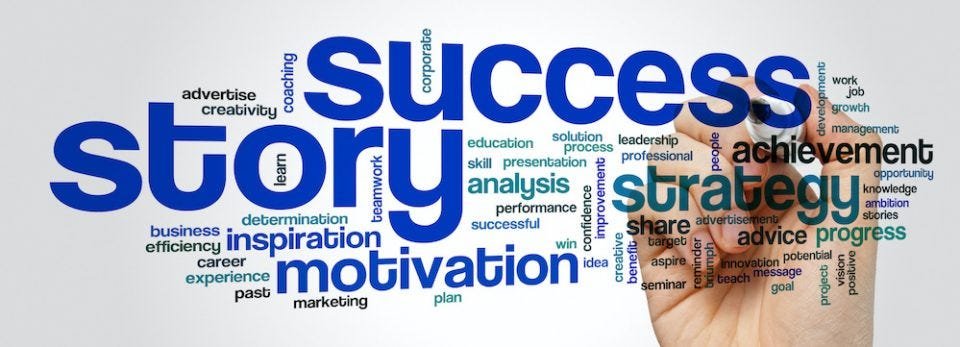from FeedbackMagazineOrg: You Need to Know Everything
Why from FeedbackMagazineOrg is Crucial for Business Growth
From FeedbackMagazineOrg is essential for business growth as it provides direct insights into customer experiences and preferences. By soliciting feedback, businesses gain valuable information about what customers appreciate and what areas require improvement. This information helps in identifying gaps in products or services, optimizing operations, and enhancing overall customer satisfaction. Effective use of feedback allows businesses to make informed decisions, tailor their offerings to meet customer expectations, and stay competitive in a rapidly evolving market. Feedback also fosters a customer-centric approach, showing that a company values its customers’ opinions and is committed to continuous improvement. This can lead to increased customer loyalty, repeat business, and positive word-of-mouth, which are crucial for long-term growth. Moreover, feedback helps in identifying trends and emerging needs, allowing businesses to innovate and adapt their strategies accordingly. By integrating feedback into their decision-making processes, businesses can not only address immediate concerns but also proactively anticipate and meet future demands, driving sustained growth and success.
The Role of Feedback in Customer Satisfaction
Feedback plays a pivotal role in customer satisfaction by providing a window into the customer’s experience with a business’s products or services. It helps businesses understand how well they are meeting customer needs and where improvements are necessary. Positive feedback reinforces what a company is doing well, while negative feedback highlights areas that need attention. This understanding enables businesses to address issues, refine their offerings, and enhance the overall customer experience. Satisfied customers are more likely to return and recommend the business to others, contributing to a strong reputation and increased customer retention. Additionally, businesses that actively seek and act on feedback demonstrate a commitment to customer satisfaction, which can build trust and loyalty. By continuously monitoring and responding to customer feedback, businesses can maintain high satisfaction levels, adapt to changing expectations, and ensure that their products or services consistently meet or exceed customer standards
Methods for Collecting Customer Feedback

There are several effective methods for collecting customer feedback, each offering unique advantages. Surveys and questionnaires are commonly used tools that can be distributed through various channels, such as email, websites, or in-person, to gather structured and quantitative data. Online reviews and ratings on platforms like Yelp and Google provide unfiltered customer opinions and can reveal trends and common issues. Focus groups involve engaging a small, representative group of customers in discussions to gain qualitative insights and deeper understanding. Customer interviews allow for one-on-one interactions, providing detailed feedback and personalized perspectives. Feedback forms, whether digital or physical, enable customers to provide input at the point of interaction. Each method can be used independently or in combination to gather comprehensive feedback, helping businesses understand their customers’ experiences and make informed decisions for improvement.
Analyzing Customer Feedback
Analyzing customer feedback involves a systematic approach to uncover actionable insights. The process begins with categorizing feedback into relevant themes, such as product quality, customer service, or pricing. This helps in identifying recurring issues and areas of concern. Quantitative data from surveys can be analyzed using statistical methods to determine the frequency and significance of specific feedback. Identifying trends involves looking for patterns over time, which can indicate emerging customer preferences or recurring problems. Sentiment analysis, often facilitated by software, assesses the emotional tone of feedback, categorizing it as positive, negative, or neutral. Combining these analytical methods provides a comprehensive view of customer experiences, enabling businesses to prioritize improvements, make data-driven decisions, and enhance overall customer satisfaction.
Implementing Changes Based on Feedback
Implementing changes based on feedback is crucial for demonstrating responsiveness and improving customer satisfaction. The process begins by prioritizing actions based on the significance of the feedback and its impact on customer experience. Businesses should develop clear action plans outlining the steps needed to address identified issues or implement suggestions. Communication is key; businesses should inform customers about the changes being made in response to their feedback, reinforcing that their opinions are valued. Monitoring the results of these changes is essential to ensure they effectively resolve the issues and meet customer expectations. This ongoing evaluation helps businesses adjust their strategies as needed and reinforces their commitment to continuous improvement and customer satisfaction.
Key Insights from FeedbackMagazineOrg

FeedbackMagazineOrg provides valuable resources and insights for leveraging customer feedback effectively. Key insights include best practices for collecting feedback, such as using diverse methods to capture comprehensive data. The platform offers detailed case studies showcasing real-life examples of businesses that have successfully utilized feedback to drive growth and improvement. Additionally, FeedbackMagazineOrg highlights tools and technologies that can streamline the feedback process, from automated analysis to customer relationship management systems. By exploring these resources, businesses can learn from others’ experiences, adopt effective feedback strategies, and access tools that enhance their ability to gather, analyze, and act on customer insights.
Improving Customer Service
Improving customer service through feedback involves addressing gaps and enhancing interactions to meet customer expectations. Feedback can reveal specific areas where service may be lacking, such as response times, communication quality, or problem resolution. Businesses should use this information to develop targeted training programs for staff, establish clear service standards, and implement processes that ensure consistent and high-quality service. Monitoring service performance regularly and reviewing feedback helps identify ongoing issues and opportunities for improvement. By actively addressing service concerns and continuously refining service protocols, businesses can enhance customer satisfaction, foster loyalty, and build a positive reputation.
Enhancing Product Quality
Feedback is instrumental in enhancing product quality by identifying defects, shortcomings, and areas for improvement. Customer feedback provides insights into how products perform in real-world scenarios and highlights any issues that may not have been evident during development. Businesses can use this feedback to make necessary adjustments, improve product design, and ensure that features meet customer expectations. Implementing a feedback-driven approach to product development helps in creating products that are more aligned with market needs and preferences. Additionally, addressing quality concerns promptly and effectively can prevent negative reviews and enhance customer satisfaction, contributing to long-term success and brand loyalty.
Effective Marketing Strategies
Incorporating feedback into marketing strategies can significantly enhance their effectiveness. Feedback helps businesses understand their target audience’s preferences, pain points, and perceptions, enabling the creation of tailored and resonant marketing messages. By analyzing feedback, businesses can refine their campaigns to address specific customer needs and highlight the benefits that matter most to their audience. Feedback can also inform content creation, ensuring that marketing materials are relevant and engaging. Additionally, businesses can use feedback to evaluate the success of marketing campaigns, making data-driven adjustments to optimize performance and achieve better results. Leveraging feedback in marketing strategies helps in connecting with customers more effectively and driving successful outcomes.
FAQs About Leveraging Feedback for Business Success

What is FeedbackMagazineOrg?
FeedbackMagazineOrg is an online platform dedicated to helping businesses harness the power of customer feedback. It offers a range of resources, including articles, tools, and case studies, designed to guide businesses in collecting, analyzing, and implementing feedback effectively. The platform aims to provide insights and strategies for improving customer experiences and driving business growth through feedback.
How Can I Access FeedbackMagazineOrg?
Accessing FeedbackMagazineOrg typically involves visiting their website, where users can browse available resources and sign up for newsletters or memberships. Some content may be available for free, while premium resources might require a subscription or purchase. By exploring the platform, businesses can gain valuable insights and tools to enhance their feedback processes.
Is FeedbackMagazineOrg Free?
FeedbackMagazineOrg offers both free and premium content. Free resources may include basic articles, guides, and introductory tools, while premium content often provides access to in-depth reports, advanced tools, and exclusive case studies. Businesses can choose the level of access that best suits their needs and budget.
The Importance of Continuous Improvement
Continuous improvement is essential for maintaining a competitive edge and ensuring that a business adapts to changing market conditions and customer expectations. It involves regularly reviewing and updating processes, products, and services based on feedback and performance data. This iterative approach helps businesses stay relevant, enhance quality, and address emerging challenges. Embracing a mindset of continuous improvement fosters innovation and resilience, allowing businesses to respond effectively to feedback, drive growth, and achieve long-term success. By consistently seeking opportunities for enhancement and incorporating feedback into decision-making, businesses can maintain high standards and meet evolving customer needs.
Encouraging a Feedback Culture
Fostering a feedback culture within an organization involves creating an environment where feedback is actively sought, valued, and acted upon. This starts with leadership commitment to modeling and supporting feedback practices. Encouraging employees at all levels to seek and provide feedback helps in identifying areas for improvement and promoting open communication. Additionally, businesses should engage customers in feedback processes and demonstrate that their input leads to meaningful changes. A feedback culture enhances transparency, builds trust, and drives continuous improvement, ultimately contributing to better organizational performance and customer satisfaction.
Regularly Updating Your Processes
Regularly updating processes is crucial for maintaining efficiency and effectiveness in response to feedback and changing conditions. This involves periodically reviewing and revising operational procedures, workflows, and policies based on insights gained from feedback and performance metrics. Continuous updates ensure that processes remain aligned with current best practices, address emerging challenges, and incorporate improvements. By staying agile and responsive, businesses can enhance productivity, reduce inefficiencies, and better meet customer needs. Regular updates also help in adapting to new technologies and market trends, ensuring that processes support overall business goals and objectives.
Celebrating Small Wins
Celebrating small wins is an important aspect of maintaining motivation and acknowledging progress in the journey of continuous improvement. Recognizing and celebrating achievements, even minor ones, boosts team morale and reinforces positive behavior. It helps in building momentum and encourages teams to stay engaged and committed to ongoing improvement efforts. Celebrating small wins also provides an opportunity to reflect on successes, share best practices, and motivate employees to strive for further accomplishments. By highlighting and appreciating these achievements, businesses can foster a positive work environment and drive sustained progress toward larger goals.
Leveraging Technology for Better Feedback

AI and Machine Learning
AI and machine learning technologies can significantly enhance the feedback process by automating data analysis and identifying patterns in large volumes of feedback. These technologies can perform sentiment analysis, categorize feedback, and provide actionable insights quickly and accurately. AI-powered tools can also predict trends and customer preferences, helping businesses make data-driven decisions. By leveraging AI and machine learning, businesses can streamline feedback management, gain deeper insights, and respond more effectively to customer needs.
Customer Relationship Management (CRM) Systems
CRM systems are valuable tools for managing customer interactions and feedback. They help businesses track feedback, monitor customer interactions, and integrate feedback into customer profiles. This centralized approach allows for more effective communication, personalized responses, and targeted improvements based on customer history and preferences. CRM systems also provide analytics and reporting features that aid in understanding feedback trends and measuring the impact of changes.
Social Media Monitoring Tools
Social media monitoring tools track and analyze customer feedback on social media platforms. These tools provide real-time insights into customer sentiment, trends, and emerging issues. By monitoring social media conversations, businesses can quickly identify and address concerns, engage with customers, and adapt their strategies to meet evolving expectations. Social media monitoring also helps in understanding public perception and responding to feedback in a timely manner.
Real-Life Success Stories

Case Study 1: Boosting Customer Retention
A retail company used customer feedback to revise its return policy, making it more customer-friendly and hassle-free. This change led to a noticeable increase in customer satisfaction and retention rates. By addressing feedback on the previous policy’s complexity, the company improved the overall shopping experience and strengthened customer loyalty.
Case Study 2: Enhancing Product Features
A tech company gathered feedback on a software product and identified key areas for enhancement, such as user interface improvements and additional features. By implementing these changes, the company significantly increased user satisfaction and product adoption. The feedback-driven updates addressed customer pain points and added value, leading to positive reviews and higher sales.
Case Study 3: Successful Marketing Campaigns
A food delivery service analyzed customer feedback to refine its marketing messages and promotional offers. The insights helped the company better align its campaigns with customer preferences and pain points, resulting in a successful marketing campaign that increased brand awareness and order volume. By tailoring their approach based on feedback, the company achieved greater marketing effectiveness and customer engagement.
Taking the Next Step
Getting Started with FeedbackMagazineOrg
To get started with FeedbackMagazineOrg, visit their website and explore the available resources. Consider subscribing to their newsletter or membership options to access a wide range of articles, tools, and case studies. Begin by reviewing introductory materials to understand how to effectively collect and use feedback. Utilize the platform’s tools and guides to implement feedback strategies and drive business improvement.
Engaging with the Community
Engaging with the FeedbackMagazineOrg community involves participating in forums, discussions, and networking opportunities. Connect with other business professionals to share experiences, seek advice, and learn from others’ successes and challenges. Engaging with the community provides additional insights, support, and opportunities for collaboration, enhancing your feedback strategies and business practices.
Continuous Learning and Improvement
Commit to continuous learning by regularly accessing new content, attending webinars, and staying updated on the latest feedback strategies and tools. Continuous learning helps businesses stay informed about best practices, emerging trends, and innovative solutions. By incorporating new knowledge and adapting feedback practices, businesses can maintain a competitive edge and achieve ongoing improvement and success.






